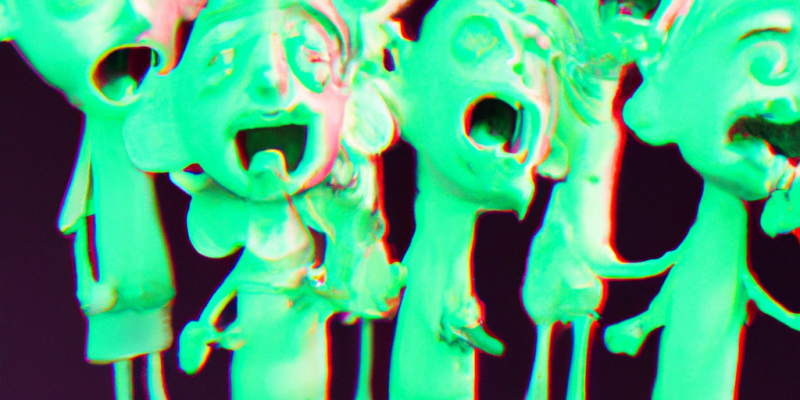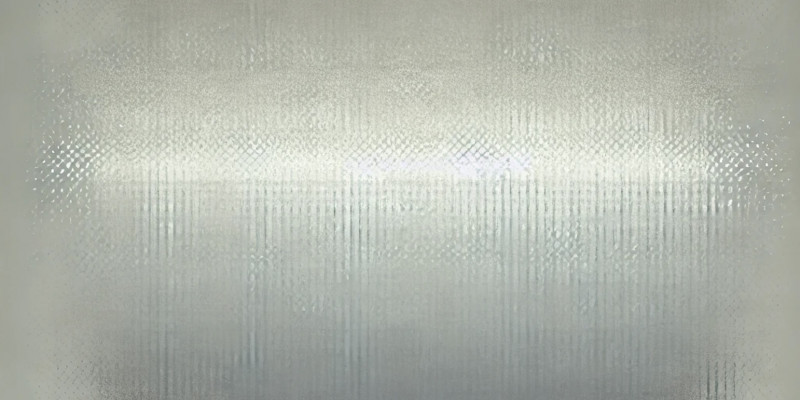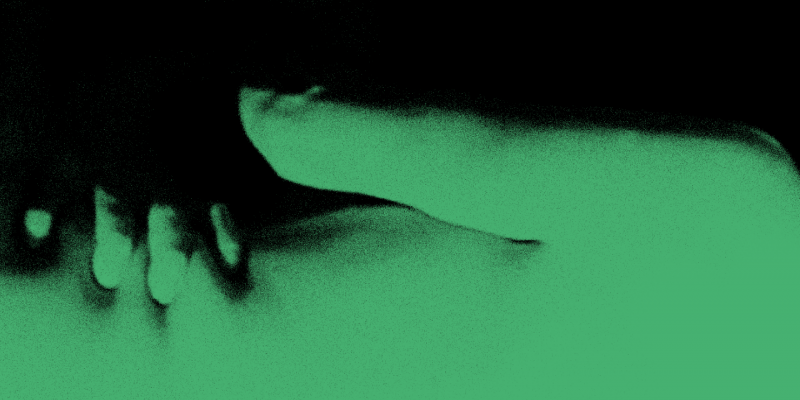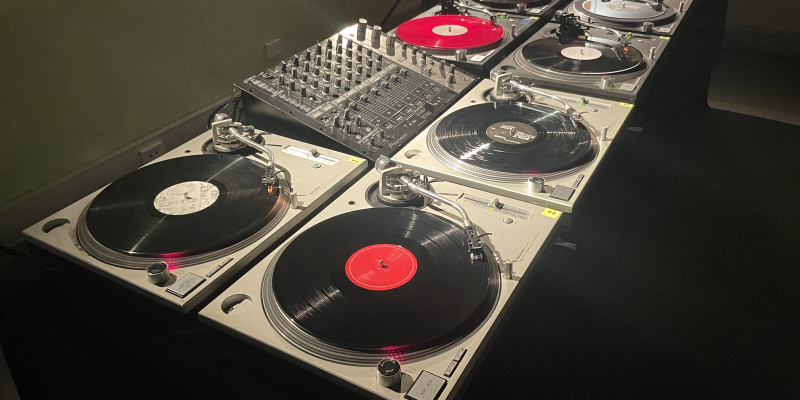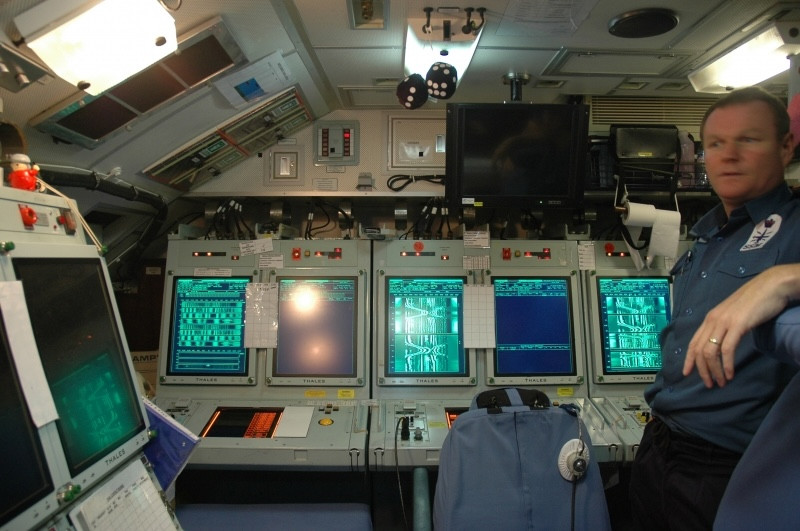
Notes on ping
Abstract
This paper explores the complex imaginary and material formation of the sound-word »ping«. A most ubiquitous and generic yet heterogenous sound, it is as much audible in remote marine environments and laboratories as it is in domestic interiors. Its emotional charge can be similarly divergent: as a transduced sonar signal, for example, it gathers oceanic intensities, and modulates them for the ear, producing cross-contextual affect. This amplification of ‘threat’ is discussed in relation to the sound’s banal efficiencies in domestic and workspace spaces (where »pings« aggregate as ambient background) when the background acoustic is subdued (Thompson, 2002). Christoph Cox’s notion of sonic ontology (2018) is applied implicitly by way of his discussion of the signal of the actual within the virtual ‘noise’ that constitutes sonic flux. This frames and relativizes the discourse of signal/noise through an exploration of the sound of »ping« and its elevation as a cultural literary reference (in Samuel Beckett’s prose poem). This isolated generic sound (one that is entirely contrived and manufactured) can, it will be argued, operate on an affective spectrum for the listener from the banal to the horrifyingly significant.
Traces blurs light grey eyes holes light blue almost white fixed front ping a meaning only just almost never ping silence.
Samuel Beckett: Ping (1967)
OBSTETRICIAN: Amplify the ‘ping’ machine.
[ping]
Monty Python: The Meaning of Life (1983)
A ping from the present can return as a blast from the past.
Amit Pinchevski: Echo (2022)
Introduction
It is the imagined sound of the cinematic submarine; of coffee sufficiently warmed in a microwave; the signal emitted from an old-fashioned typewriter when the handle is moved to the right to advance the line; the blip from the expensive monitoring machine (the one »that goes ping«).1 For such a short and onomatopoeic word, derived from the sound itself, it has a surprising contextual variance and operates as a diversely affective trigger. Dictionary definitions concur on the brevity of its sounding »sharp [...] like that of a striking bullet« (OED) and of its high pitch and generally concur on a second definition - of a sonar echo made audible. It can function as a verb or noun. Importantly, it is most prevalent as a contrived and manufactured sound (since it doesn’t occur routinely in the natural world). In this form, it communicates an array of semantic meanings: less alarming at times than an unremitting siren perhaps but a (staccato) call for attention. The ping is always a sound on a threshold.
The synthetic qualities of this archetypally twentieth century sound will primarily be explored, over those incidental occurrences of natural materials and kinetic forces. Some key cultural examples are dissected in support of the argument of ping’s era-specificity. This apparently disparate selection – from bleak experimental literature (Samuel Beckett) to BBC satire (Monty Python), by way of the genre of the Hollywood submarine feature film – signposts a wide-ranging high/low cultural spectrum of affective potency. Audiences can be said to have been engaged and mobilized through humor, dread and existential anxiety to consider the differing registers of »ping«.
The ping is examined as it alerts and warns in both quotidian and extraordinary applications. It is, as Amit Pinchevski notes, »a phatic signal par excellence: its aim is to ascertain contact« (2022, p. 148). Examples of »pingings« and the behavioral and psychological ‘psycho-behavioral’ affect they prompt, can be seen to vary in intensity of tone (in both senses of the word), from domestic appliances, SMS and computer alerts to medical and military sensing technologies. While these are wildly varied in scale and function, all (arguably) are intended to be at the service of the human operator/listener and all sound ‘in context’.
The ping in context
Increasingly there are fewer environments on earth where human-made activity is not audible, whether proximal or distant. Generic noises freely populate these places: familiar and repetitive sounds that may barely trouble our attention to seek for their cause (since it is already known). These sounds are and can be constituents of a daily life soundtrack, and might be melodic, discordant, repetitive. These sounds that envelop us, place us in certain affective attitudes and dispositions. This impact may be difficult to untangle from the place to which they are tied (and which conditions their audibility and reception).
When the »ping« is heard – whether this is an isolated sounding or in a rhythmic sequence – we also hear the acoustical and contextual space in which it sounds. The ping may reverberate and remind the listener of its location within a particular aural architecture. This composite of multiple surfaces, objects and geometries can have a social meaning (Blesser & Salter 2007, p. 3) and examples of such aural architectures can be readily recalled. The lobbies within corporate spaces, for example, are distinctive spaces where the choice of materials heightens the impact of the footfall on arrival and acoustically may prompt a particular association or semiotics of power. The ping of the lift (to those awaiting its arrival and for those traveling within) tacitly announces the number of floors, simultaneously broadcasting to its users the height and symbolic presence of the building.
The sonic attributes of a space – particularly its reverberation – can provide perceptible expressions of its materiality and dimensions, its unique character in other words. The spatial, aural and phenomenal are thus firmly interlinked. However, our attentiveness may not necessarily be foremost: to quote architectural theorist Juhani Pallasmaa, a »space is understood and appreciated through its echo as much as through its visual shape, but the acoustic percept usually remains as an unconscious background experience« (2005, p. 50). Paying attention to sounds in space can offer a wider contextual reading though, since as Brandon Labelle notes, »[s]ound sets into relief the properties of a given space, its materiality and characteristics, through reverberation and reflection, and, in turn, these characteristics affect the given sound and how it is heard. There is a complexity to this that overrides simple acoustics and filters into a psychology of the imagination« (Labelle 2006, p. 123). Labelle elaborates on this notion with the example of the speaking voice as a sound source – where the utterance is generally imagined to emit from a sole individual, »the index of the one who speaks«. Briefly, he proposes that with a shift in perspective we can consider that we are in effect hearing sound »not as object, but as space« since we’re not simply hearing just voice but the body itself (from which the sound resonates) and the room in which it is sited. The acoustic relationship between the (source of the) sound and the room which holds it, however, is not stable.
An increasingly cultural and technical history reveals the desire to variously control and simulate the reverberation of rooms, as if to influence our perception through a kind of auditory acculturation. As Pallasmaa provocatively asserts, »in the interiors of today’s buildings echoes are absorbed and censored« (2005, p. 51). This sentiment contends that rooms, like designed exterior spaces, have been increasingly acoustically controlled and dampened. Echoes have been displaced in cities, masked by ubiquitous piped muzak. Cultural tastes change as shifts in technological, architectural and acoustic engineering occur, indeed in the early twentieth century »echoes, reverberation, and resonances were all viewed as a kind of amplified noise« (Blesser & Salter 2007, p. 108).
In The Soundscape of Modernity, Emily Thompson (2002) describes how pivotal this epoch was for transformation in hearing (and listening). The development and use of new (soundproofing) acoustical materials, not just in auditoria but embedded in the spaces of everyday life, for example – resulted in a new ‘modern’ sound. It was modern because »it instantiated a distinctive cultural characteristic that has long been recognised as definitive of the era« (2002, p. 172). The modern hospital (as formalized as the National Health Service in the United Kingdom in the mid-twentieth century) is a useful and sometimes contrary example to consider in this regard. Sounds, as David Theodore asserts, »differentiate hospitals from hotels, office buildings and libraries« (Theodore 2018, p. 987). Major developments in architectural design (exterior structures and building materials) have changed the ways that hospitals »sound«. Some noises have been dampened or subdued (through sound proofing for example), while new ones have emerged. Modern hospital architecture produces unwanted sounds at the same time as trying to mollify them (Theodore 2018).
Modernity, therefore, heralds the moment when specific sounds and spaces no longer have any close, naturalistic, or indexical relationship (Thompson 2002). Emily Thompson surmises that modern sound, like Cubist art and cinematic montage, »should similarly be recognized as a cultural artifact at the cutting edge of change« (ibid., p. 172). This argument is developed to describe the reconfigured relationship between communication forms (that is, the telephone) and real space in this era’s so-called »electroacoustic soundscape« where the acoustic space in which (telephonic) speech emanates is inaudible at the other end of the line. The telephonic »ping« sits in-between, an ambient sound that alerts the user to its threshold possibilities of other spaces.
This prompts awareness of both attentive listening and pre-emptive listening that generic sounds (such as the ping) can evoke as they intrude. »We are the listening device through which time speaks« writes Sean Street (2020, p. 19) in advance of his attempt to exhaustively record a single day’s listening (through audio recording and writing). He pays close attention to the flows of sound that envelop and those that dwindle, and the realization that the devices he needs as a writer, and which enable the space, also produce distraction and intrusion. »I switch my phone off. On the computer I deactivate the internet. Even the possibility that the phone might ring, or an email might ‘ping’ onto the screen, the very idea emits a tiny sound, a disturbance at the back of the mind« (Street 2020, p. 20). Street can be reassured that the recorder captures everything in this quiet house, it will tell him later what he has missed.
Signal/noise and Ping
A counter approach is to consider the ‘ping’ not within the acoustical framework, but within the context of »sonic flux«. Theorist Christoph Cox suggests ‘noise’ comes saddled with associations and readings »as a secondary phenomenon, as something derivative […,] disruptive […,] a nuisance that we wish to eliminate« (Cox 2018, p. 114). This can be further developed with the discourse of information theory where noise is taken to be “what interferes with the transmission of messages and signals” (ibid.) from sender to receiver. As a way to escape the “traditional metaphysical oppositions between substance/accident, essence/appearance” (ibid.), the distinction between signal and noise (or music and noise), Cox argues, should instead be viewed as relative rather than absolute. The proviso that the difference be viewed as one of intent is not deemed sufficient, however, since ‘signal’ is still privileged (through the perspective of communication, and thus of human intent). Cox uses an analogy from cultural theorist Abraham Moles and a conclusion that there is no structural difference between signal and noise: »he only difference which can be logically established between them is based exclusively on the concept of intent on the part of the transmitter« (ibid.). Consequently, Cox makes a case for reviewing this ‘background’ and giving noise its own ontological place, since, it should be remembered, »before there were creatures to exchange signals, there was noise: the crackling of cosmic radiation, the rush of solar wind, the roar of the sea, and so on. And even now, every signal is issued against the backdrop of this noise« (Cox 2018, p. 115). Cox picks up on Michel Serres’ notion of noise as »background hubbub,« a »ceaseless sonic flux«. Just as objects fill visual space, noise is what fills the auditory field: »the hum of fluorescent lights, the rustling of leaves or fabric, the sound of traffic, radio static« (ibid.).
In this articulation, it is suggested that we (need to) adjust our notion of noise toward that which cannot be observed or experienced as (a series of) sounds. Cox argues that it is »a transcendental phenomenon, the condition of possibility« (ibid., my italics) for signal and noise. Our attention is temporarily drawn to a signal when it comes to the fore, away from the background noise. A reading of the early modern rationalist philosopher Gottfried W. Leibniz usefully augments this notion of transcendental phenomenon. Leibniz employed enduring auditory examples in the formulation of a theory of the unconscious. One of these – used to illustrate the idea that perception includes only a small amount of the available data – concerns a man who lives by a watermill who can no longer distinctly hear the constant noise (of rushing water and so on). The noise is registered on an unconscious level but has faded into the background of the man’s everyday existence. As Cox describes it, the sound stays in our background, constituting »silence«. Only the singularity of a signal such as music or speech stands out against the background, »contracts it and renders sound clear and noticeable« (Cox 2018, p. 117).
The other, better-known, »white noise« example concerns the sounds of waves: »It is like walking on the seashore and hearing the great noise of the sea: I hear the particular noises of each wave, of which the whole noise is composed, but without distinguishing them« (Leibniz cited in Cox 2018, p. 116). In other words, perception of the whole (noise) is clear but confused since component parts are not heard. If one doesn’t hear the individual wave, then one can’t hear the aggregate. The sound of each must be distinct therefore but in an unconscious and therefore obscure sense. Cox draws on Leibniz’ use of the sound of the sea (and watermill) as evidence for a theory of »minute perceptions« where »each of our conscious perceptions is grounded in a vast swarm of elements that do not tend to reach conscious thought« (ibid.). Listening, as Cox argues, is a way of »contracting or capturing a portion of this flow through biological or mechanical means« (ibid., p. 4). The environment (and its contextual urgencies) arguably conditions the listening mode.
Cox has suggested that twentieth century recording technologies have been pivotal in drawing attention to the ontology of sound (the account of its being in other words). He provides an example from Thomas Edison (inventor – with Charles Cros – of the phonograph in 1877) who, in wanting to capture speech and music, »could not help but also capture the reverberations of the room, the hum of electricity, the whir of the machine, and countless incidental sounds that make up the auditory field« (Cox 2018, p. 120). Sound recording, in other words, »amplified« the auditory unconscious and »brought it to the fore« (ibid., p. 120). Artists, Cox argues, have accordingly been eager to explore and exploit possibilities to gather and manipulate sonic flows and the reverberations, hums, vibrations and stutters that circulate (in various architectures). A cursory search can trace ‘ping’ to some wildly different audio works such as the eponymous Ping (2001), an installation by composer and researcher Chris Chafe and digital artist Greg Niemeyer, which used sonification in converting »Internet traffic data into music« (Kwok 2012) using sounds from a circle of aluminum loudspeaker columns, and the delicate synthetic, electroacoustic musique concrète of »Girl in the Vague« (2013), a track on the album La règle. This collection of sonic exchanges by the six-strong Montreal group called Fünf »was recorded between two residential basements on Berri Street, and live on a campus-community radio station from 2011 to 2014 in various formations« (Gallanter 2015).
The »ping« is idiosyncratic in its strange fusion of Cox’s ‘sonic-ontological’ and the American ethnomusicologist and anthropologist Steven Feld’s »acoustemological« contexts. When considered in terms of Feld’s portmanteau phrase, which emphasizes the close connection of the acoustic with knowledge, the ping, in its capacity of alert, alarm, or to draw attention to some stage in a technological process, shows its epistemological face. However, given the ‘knee jerk’ response of both our minds and our bodies to this trigger – the way in which each seems deeply habituated to the urgency of the »ping«, and given the role of the sonic as a material force, or probe, that sometimes underpins (and is thus deeply implicated in the production of) such cues, the ping is no less implicated in a set of ontological concerns. The ping, in this sense, would seem, ultimately, to be onto-epistemically Janus-faced, and this is perhaps the primary source of our strange fascination with this phenomenon.
The »ping« emerged as a signal to cut through the ambient domestic (noise) background. In the process it has, for some, become (literal) noise over time. A subjective »noise«, since it may be relatively quiet but causing stress for a multitude of reasons. Not domestic space, but the different alarms, tones and pings emitted by the hospital technologies and monitoring devices can both signal the state of the patient and the state of the machine itself (if battery life is waning). This electronic beeping soundtrack can become wearisome for those most desensitized through habitual listening, but nevertheless needing to respond. Alarm fatigue may even occur, affecting clinicians, especially nurses who »become desensitized to safety alarms due to the sheer number of alarm signals, which in turn can lead to missed alarms or delayed response. Alarm desensitization is compounded by the fact that false or non actionable alarms occur frequently« (Woo & Bacon 2020). The alarm may be ignored but also turned down or deactivated.
The ping at the beginning ….
In an enduring sketch as part of Monty Python’s film The Meaning of Life (1983), the depersonalized mise-en-scène of the hospital birth with its deification of medical technologies is acutely parodied. In the ironically entitled The Miracle of Birth (lasting an economical 3 minutes 40 seconds), hospital culture is characterized as absurd and patriarchal with the mechanized »theater« of childbirth depicted as an unnatural medical aberration. Briefly, the sketch consists of a cohort of male medics preparing for an unspecified operation in theater, surrounded by gleaming machinery (the »patient« having not arrived yet). One of the key devices mentioned is the »machine that ‘goes ping’«, an apparatus which is »the most expensive machine in the whole hospital!«, and which is routinely brought out to impress the hospital administrator. A pregnant woman is wheeled in, and the birth (from which the father is excluded) becomes a speedy spectacle, with some slapstick intervention. As Anamaria Iosif Ross notes, the satire shows »the sensory signals of a machine […] taking precedence over those of a human being« (Ross 2014, p. 152). The mother is clearly an irritant and an oversight, to the extent she is abandoned amidst the white machinery at the end of the sketch.
At each mention of this revered machine, the word ‘ping’ is intoned (or rather mimicked) by the doctors in an exaggerated and onomatopoeic way – high pitched and comedic. The »ping« sound made by the machine itself (presumably alluding to both ultrasound scanner and heart rate monitor or electrocardiogram) is different from the human attempts to imitate it, which are more akin to a sound effect submarine sonar ping. The act of mimicry here draws attention to the ping’s inherent ludicrousness and imitative potential in its sound. Machine voices may be evoked by the human voice to affective and activist ends however: the practice of Mikhail Karikis, for example, has involved the artist working with a diverse range of participants learning (through listening) to voice the distinctive noises in the environment in which they dwell or have worked. Relationships between voice and place are made manifest.
In Karikis’ video work Children of Unquiet (2013-14), a group of children, apparently existing alone in a post-industrial Italian village (which was once a geothermal power plant), produce vocal sounds akin to the audible background to their lives, sounds which have effectively become »part of their psychic make-up« (Heisler 2017). They make utterances akin to subterranean rumbles, hissing steam noises and bubbling water sounds. In Sounds from Underneath (2010), a male voice coal miners choir ‘sing’ the noises of the disused colliery in East Kent where they once labored. The video (made in collaboration with Uriel Orlow) was filmed in the desolate site of the colliery which provides an amphitheater-like space for their voicing of the grinding, explosive and mechanical sounds that were integral to their labor. This inert place of industry is temporarily invigorated by the sounding bodies who worked here. These works broadcast the performance of these environmental sounds (by both a pre-existing choir and an ad hoc formation of child participants) as communal choral experiences, they are collectively »making noise«. Karikis notes the difference in preparation, as the children have »more fluid access to the nonverbal […] of voice as sound, voice as material, is more accessible to them« (Heisler 2017). Across these two works and in others that employ experimental strategies, Karikis explores both giving voice to the unheard and giving voice back to place.
As a wider contextual aside, The Miracle of Birth scene from Monty Python’s The Meaning of Life prompts thought on how the distinct soundscape of the hospital impacts and intrudes on the consciousness of those who work there. Anthropologist Tom Rice notes that sound in hospitals takes on »a more emotional quality because of the drought in other sensory modalities« (Rice 2003, p. 5). Hospital sounds swell in both random surges and more predictable patterns: identifiable as the kinetic and material sounds of uniforms and the putting on of protective clothing, the »ping« of pagers, bells, diagnostic machines, trolleys, the squeak of wheelchairs, the trundle of bins and so on. This waxing and waning fills this 24-hour environment. Researchers Joanna Sutton-Klein, Alex De Little and Richard Body note that hospital sonic environments are not fully considered in hospital design. In effect, spaces are inadvertently generated that support neither care nor healing. Indeed, the process of recovery is hampered for patients as is the ability of hospital staff to effectively carry out their work. To test this, the researchers enacted the ‘embodied’ practice of »deep listening« as a qualitative approach, paying close attention to the sonic environment within emergency departments.
This practice of profound attentiveness derives from the work of the late American composer Pauline Oliveros, who formulated and disseminated »deep listening« in the form of a concept, program, scores, texts and recordings, originating in the early 1970s. This means of »developing a greater awareness of oneself as part of the sounding world« (Gallagher 2015, p. 43) was intended to »heighten and expand consciousness of sound in as many dimensions of awareness and attentional dynamics as humanly possible« (Oliveros 2005, p. xxiii). Oliveros’ influential Deep Listening workshops (involving individual and group meditation exercises, for example) were run by the composer for decades and the term has now passed into more general usage to connote the practice of finely tuned awareness to sound and its emotional value.
Arguably it indicates allegiance with (the intentionality behind) the World Soundscape Project, founded by Canadian composer R. Murray Schafer in the late 1960s which was, in part, an attempt to draw attention to the negative impact of noise pollution on the sonic environment (or soundscape). Similar to Schafer’s »nostalgic yearnings for a pre-electronic, even pre-industrial soundscape« (Toop 1995, p. 253), Oliveros has written of the harmful sonic battering (and environmental depletion) that has denuded the richness of what can and could be heard. She notes that in relatively quick time a »modern technological soundscape has emerged« so that in this century the environmentally abundant and noisome soundscape (experienced in her American childhood) is now “considerably thinned out by asphalt, concrete pavements and building developments” (Oliveros 2005, p. xv). Consequently she made an impassioned call for attentive listening – of the self and the environment since »[i]deas, feelings and memories are triggered by sounds. If you are too narrow in your awareness of sounds, you are likely to be disconnected from your environment« (ibid., xxv).
The recent emergency department study initiated by Joanna Sutton-Klein, Alex De Little and Richard Body, applied deep listening with attention to this most intense of sonic environments. Specifically a small cohort of participants (with »pre-existing interests in sonic environments or healthcare« (Sutton-Klein, De Little & Body 2023, p. 888) were recruited, introduced to Oliveros’-derived exercises which were then put to service in 30 minutes of deep listening in an emergency department, »seated in pairs in the waiting rooms for minor injuries, ambulatory patients, and pre-triage walk-in patients« (ibid.). This period of acute attention was followed by a focus group discussion. Through this method, a range of sounds were identified including »mechanical hums, monitor alarms and the sounds of people moving. The sounds evoked varying reactions among participants, including anxiety when the source or significance of the sound was unknown« (ibid., p. 889). The participants reported their attention to the emotive qualities in speech (even if the content of the words was not audible). The conclusion of this trial project was in supporting the use of deep listening as a constructive methodology, rationalizing the notion of further research (and »intervention«) in hospital emergency »with the aim of improving patient experience, patient safety and staff wellbeing« (ibid.).
This research will no doubt contribute to a greater understanding of the impact of the non-causal generic sound in this specific environment, replete as it already is with uneasy intensities. We are placed in affective relationships with the noises that surround us. Arguably the process of deep listening has given way to a mode of »affective listening«, which focuses upon the palpable behavioral and emotional transformations that are induced in the listener. As Michael Gallagher notes: »If brought into conscious awareness, these affects will likely be understood afterwards as emotions« (Gallagher 2013). Reference can be made to Steve Goodman’s scholarship into »sonic warfare« where the fall-out and impact of both low and high frequency sounds can generate senses of anxiety. For Goodman, »sound contributes to an immersive atmosphere or ambience of fear and dread« (2010, p. xiv). He argues that this fear can be a virtualized one, no less real for being produced by sound (effects).
The complexity of sounds within hospitals mirrors the concentration of meaning in the diverse methods of listening that are »simultaneously in play and where multiple layers of auditory knowledge and experience may be found« (Rice 2015, p. 104). In examining sensory practices of listening in a hospital, the diagnostic act of »auscultation’«(or »stethoscopic listening«) became a particular focus for scrutiny for Rice. This falls within the category of »embodied listening« where sounds are felt throughout the body as physical vibrations (not simply in the head/ears). This listening is in the service of »the production of medical knowledge« (ibid., p. 105). Rice references Jonathan Sterne’s concept of »ensoniment« to understand the cultural emergence of this technique of listening and the establishment of its desirability as a scientifically rigorous practice where »people harnessed, modified, and shaped their powers of auditory perception in the service of rationality« (Sterne 2003, p. 2). This listening amplifies the quiet sounds to »reveal [diagnostically] what is wrong« (Pinch and Bijsterveld 2012, p. 14).
Rice’s active hospital fieldwork – both in the observation of medical students and in taking an »ears on« approach to stethoscope listening (Rice 2015, p. 107), asserts the »private auditory space« as one in which the doctor »is able to listen intently, undisturbed by the wider sound environment« (ibid., p. 105). Rice’s complex findings explore how auscultation connects the physician’s body to the patient’s own, in both physical ways (tactile and visual) but also in empathetic and ethical ways, as »an intimate, personal and humane type of medical interaction« (ibid., p. 106). There is a fear, Rice notes, that auscultation’s replacement with handheld ultrasound devices (amongst other sophisticated medical technologies) might usurp the connection between physician and patient, creating a distance between the two. This is a listening practice that asserts the primacy of experience, knowledge and subjectivities.
Rice embedded Steven Feld’s term »acoustemology« in the subtitle for »Soundselves«, his 2003 publication arising from fieldwork at Edinburgh Royal Infirmary. Feld’s early anthropological approach in research was conducted for many years with the Kaluli people (of Papua New Guinea). He strove to communicate the sophisticated listening and hearing practices (the sonic knowledge in other words) that exemplified the Kaluli peoples’ being in the world in the environment of the rainforest. As we have seen through our earlier onto-epistemic positioning of the ping, this sound can be seen to have a clear – though perhaps somewhat overbearing – epistemological dimension. That is to say, the ping can be seen, in epistemological terms, to both reveal and conceal – alerting us to immediate urgencies and dangers, whilst covering over or obscuring the more subtle and nuanced and relational sounds of the bodily interior – sounds which can be no less valuable when diagnosing a condition.
….and at the end of life
Samuel Beckett’s minimalist prose fiction Ping (1967), albeit whilst operating in a wholly different affective register from The Miracle of Birth, also evokes the staged image of a body surveilled in a white chamber. Written originally in French in 1966 with the title Bing (and before that titled Blanc), Beckett’s English translation Ping was published the following year. The original English name was the equally onomatopoeic Pfft (Maude 2011, p. 81). Although brief – it unfolds over just two dense pages – Ping is a challenging, hypnotic and emotive read. Indeed, Beckett wrote to a friend that he had completed »something suitably brief and outrageous all whiteness and silence and finishedness« (Knowlson 1996, p. 542). Three other shorter pieces were published in the same decade as Ping, and whilst these don’t comprise a suite of works as such, they share a genetic link (Maude, 2009 p7). Loosely categorized as »allegories of the human condition«, as Maude notes, closer examination reveals they »engage in a probing examination of the contradictory nature of perception and the embodied state of subjectivity« (2011, p. 7). In this phase, Beckett’s energies were “devoted to the stylistic control of the resonances of language, rather than the multiplication of associations and implications” (Connor 2007, p. 112, my italics). Ping has nonetheless been interpreted in multiple ways: at its core is a barren vision of a consciousness trapped in a room, possibly a hospital. There is a sense that this body is under duress, on the edge of death (Lodge 1968): the final few words are »ping silence ping over«.
The lexicon is limited (no more than one hundred words) and there are no paragraph breaks, no verbs. The sentences rap out a tight unfolding ‘story’, one that is both visually evocative and enigmatic. The word »ping« recurs thirty-four times (see figure 1) to sonically puncture or disrupt the prose, like a morse code, a »metronomic ping« (Ghosh 2017, p. 160) or an incessant call button. In brief, Beckett’s writing entreats us to listen, to register the building of repetitions – significantly »ninety-nine per cent of the text is repeated phrases« in Ping (Segre 1977, p. 128).
In her formal dissection of this work, Elizabeth Bregman Segre (1977) breaks down the use and placement of the word ‘ping’ and its shifting associations with the word that follows. This attempt to detect patterns is quoted at length in this footnote.2 Segre concludes however that because of inconsistent correlations, the word ‘ping’ is not inevitably related to the word groupings: “Ping is then most likely only a sound emitted from some outside, unrecognized source […], which may or may not trigger a response. The reader is thus faced with an open field of associations, and none of these associations can be definitively substantiated” (Segre 1977, p. 131).
This interpretative open-endedness should be embraced, as Beckett himself resisted interviews or entreaties to explain his work (Sutherland 2019). Sutherland notes that scholars have habitually sought to pin down the significance of the prose title, offering readings such as that of a bell being rung or the ping of a life support machine in a hospital or hospice where someone is approaching death, but as he asserts »the answer to this is that there is no answer, there mustn’t be an answer. If we begin thematically to comb through the text looking for an explanation for this particle of sound then already we have de-musicalised the text and we have shoved it towards the condition of literariness in a way which is in fact hostile to what is going on in this text. What we have is a noise, bing« (Sutherland 2019, time: 21:29-21:50). Sutherland expands on the translation change, with the shift from »Bing« to »Ping«, with the new title’s »implosiveness […] the horrible aggressive smacking of the lips against the teeth« (ibid., time: 22:12-22:18). Beckett preferred »ping« over »bing«, ping being »a nastier sound« (ibid., time: 22:28-22:30) so befitting the caustic or »outrageous« nature of the work.
The undoubted musicality of Beckett’s prose has been widely studied (Bryden 1998; Bailes and Till 2014; Laws 2020). As Catherine Laws notes, this does not reside in a formal adoption of musical forms but noticeably in »repetitive patterns of similarity and difference – that are found in some music but cannot be considered inherently musical or literary in themselves« (2020). The intimation of music in the quality of writing in Ping, combined with the dramatic visual imagery, has lent itself to adaptations and improvisation. The systems seemingly embedded in this text do invite comparison with musical structures.
Ronit Ghosh seeks to sidestep the usual thematic analyses of Ping (such as its primary theme or the identity of the unnamed subject) to, instead, focus on its »auditory aesthetics«, more pertinently the »manifest impingement of the auditory and critical resources of post-modernist musical works on the text« (Ghosh 2017, p. 160). The formal qualities of a text (such as sentence structure, syntax and so on) have been put aside in the service of »formal and semantic exploration« (ibid., p. 160), in which a “fundamental matrix of words/phrases/expressions” undergo a staggering range of »internal permutation, combination and repetition […which] overtly resembles the artistic techniques of serialist music (exemplified by the likes of John Cage, Karlheinz Stockhausen and Pierre Boulez)« (ibid.). The processual nature of serialist music privileges a contingent and controlled set of manipulations, isolated sounds informing and producing experience. The »ping« in the Ping auditory device becomes both music and noise arguably, a constituent of the oscillating rhythm.
Signal and silence
»Give me a ping Vasily. One ping only please.«
The Hunt for Red October (1990)
The »sonar ping« is the »acoustical icon« of the submarine cinematic (Koldau 2009, p. 18). Sound design is crucial for alerting us to the signification and dramatic function of noises – and their lack – in the background (whether technical, machinic, animal and so on), especially so in these films. The widely held view of submarines derived from viewing submarine genre films is based on the crucial survival/success premise of locative sound. Arguably more than other genres, the background of the submarine film soundtrack conveys psychological and spatial information. Aside from the familiar sonic tropes (whale song, drone of engines and so on) – there is intermittent quiet. Silence is never just silence. The significance of the absence of the »ping« carries narrative psychological association, of threat but also safety (Koldau 2009).
Submariners immerse themselves in an audio landscape where live hydrophone arrays translate watery vibrations, from a spectrum of noise, into evocative and uncanny sounds. Ripples, clicking and buzzing, once interpreted, detect and classify friend, foe, or fish. »Sound officers« are trained to recognise their occurrence, with unknown sounds termed as transients, colloquially named »babbling brook«, »laughing man«, »frying fat«, »big bee« for example. Interestingly, bio-audible signals (from marine life) can sound like metallic clicks. From an evolutionary perspective, listening can be considered as a significant skill for survival, one that »facilitates the avoidance of danger and the seeking of food; it enables communication« (Rice 2015, p. 101), it induces an »intense awareness of […] lived-bodies in the ‘here’ and ‘now’« (Sobchack 2011, p. 203).
Sonar operates through the emission of sound pulses (or pings) which reflect off surfaces, echoes are made audible in other words. It became prevalent in the Second World War when used to detect enemy submarines. While marine life was sometimes mistaken for U-boats, lives were saved as a result. Those who were particularly skilled at recognising the different kinds of pings were called »ping jockeys«, the alarmists among them were called by their aggravated shipmates ‘ping-happy’” (Pinchevski 2022, p. 146). The confidentiality of the so-called ‘secret service’ has meant that first-hand accounts from submariners are difficult to access. This account (from Quora, an online knowledge-sharing platform) was offered in response to the enquiry ‘When you’re in a submarine and another ship uses a sonar ping, does it sound like it does in the movies?’, though this (and related questions) was answered by numerous former serviceman: »On a submarine, the ping seems to come from everywhere […] it’s very creepy and unsettling. You can hear the echoes bouncing off of the hull and through the water. It’s a distinctive sound that brings forth the realization that you are completely isolated, surrounded by millions or billions of gallons of water […] and something has happened that never, ever should happen; some ship has found you« (Aser 2018). The whole vehicle has become sound, the expectant silence broken. More than the other human-made sound of threat in this environment (even pounding, droning propulsion sounds), this amplified and multidirectional ping conveys catastrophic and claustrophobic terror.
Anthropologist Stefan Helmreich has conducted fieldwork on a research submersible – the Alvin – on the seafloor to explore multiple meanings of immersion (including immersion in sound). He has explored the sounds that float in and out of consciousness for the crew, the cognitive, affective and social effects of transduction – of converting & transmuting sound from the medium of water into the air and into »spatial relations dimensionally meaningful to hearing humans« (Helmreich 2007, p. 625). This work acknowledges Jonathan Sterne (2003) who argues that mechanisms of transduction built into such technologies as the telephone and radio have been read back into the very nature of hearing, in effect transduction is now imagined as a universal infrastructure for a range of cultures of hearing. It is likely that machines generally do most of the listening now for oceanographers – and for submariners perhaps also. The threshold has shifted from sound listened to sound heard.
Conclusion: when the pinging stops
Despite the apparent simplicity suggested by its onomatopoeic root, the ping harbors and generates difference, divergence and complexity. It cries for attention, in turns impinging upon, progressing, routinizing, and destabilizing situations. The ping is bound to both verb and noun – bringing to mind the baroque nomenclatures archived in I. M. Rawes’ book Honk, Conk and Squacket (2016). Rawes’ compendium of »forgotten and obscure descriptors of sound found in Victorian county dialect« (Rawes 2016, back cover) draws attention to the seemingly stronger sensitivity to environmental sound that characterizes the people of this bygone era. Rawes’ collection incorporated ‘archaic’ words as »NJOAG – the nasal suppressed sound made by cattle: the cry of a calf« (ibid., p. 85), alongside »HIRRIENT. A high-pitched or trilled sound of speech«. (ibid., p. 60). However, it also addressed the ping – though, interestingly, in less naturalistic terms. For Rawes, to PING was »To speak in a high, quick, singing voice. From the sharp ‘ping’ of the old musket. Mid 19C « (ibid., p. 94). This sonically indexical reference to the weaponry and technologies of war of the Victorian period further foregrounds the term’s technological root.
It has been claimed here that the ping must be seen as a thoroughly modern, non-naturalistic phenomenon – technologically derived and manufactured, and occupying the unstable interstice between sound and noise. We have seen how the ping has the most peculiar ontological status – it is contextually and teleologically sensitive – a sound always on the threshold of behavioral and socio-behavioral transformation. It rhythmically documents unseen worlds – from the availability of IP addresses, to the beat of a heart, or the composition of the ocean floor. Regardless of these divergent contexts, the ping always makes a presence felt. If the ‘stable’ ping is negatively entropic – standing as an index of structure, and routine – then perturbations in its rhythms signal the opening of the future, offering a prelude to an encounter with the vital, violent, or simply mundane. Despite its connection with our anxieties and fears, we might take comfort in the thought that the ping is more-often a symptom, or register of the transformative dimension of life, and that it is only silence – or the silence in the echo of the flatline tone – which ultimately marks life’s absence.
- 1These examples were gathered after a call-out I made on social media as to ping’s associative readings. Others include: “Stone on the windscreen or against an upstairs window. Bedsprings. Crows dropping walnuts down the chimney. 1950s money cylinders shooting along the rail to the cashier's cubicle in grocer's shops the sound a tin roof (corrugated iron) makes as it heats up on a hot morning; Neither a ting or ping. An unknown source of something I noticed. I was waiting in a dentist’s office complex. It wasn’t a smoke alarm, boiler, fridge, electrical tripping. I looked around and speculated for almost half an hour while losing interest” (Personal Facebook post, 2021).
- 2»Though its verbal connections within the text are varied, and even contradictory, the implications of ‘ping’ are paradoxically quite suggestive. On ten of its thirty-four appearances, ‘ping’ is followed by a ‘perhaps’ word-group: “perhaps not alone,” “perhaps a way out,” “perhaps a nature,” “perhaps a meaning.” Each of these suggests some form of longing. Six other ‘pings’ are followed by a ‘murmur’ word-group, a possible indication of life. These word groups seem to carry faint positive associations, for these traces of physical and mental animation are in strong contrast to the otherwise bleak and static scene. For these reasons the reader might be tempted to associate ‘ping’ with some form of hope. Yet this inclination is counteracted with another word linked with ‘ping,’ ‘silence’ (five occurrences), for these are additional references to the dismal scene.« (Segre 1977, p. 130).
